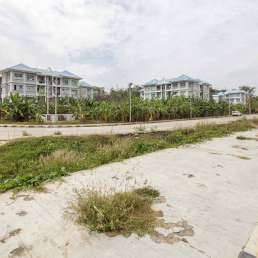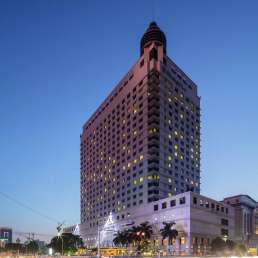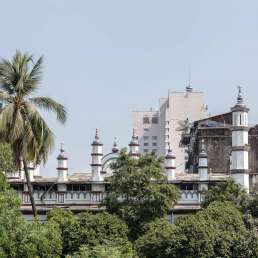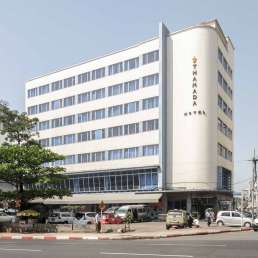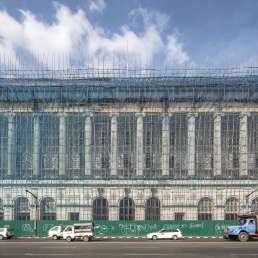Address: 132 Strand Road
Year built: 1912–1916
Architect: John Begg
The Custom House is one of the few colonial buildings still fulfilling its original function. Thanks to continued use in the post-independence era, it is well maintained. It sits on a wide plot on Strand Road, facing the port area and its wharfs. The imposing red brick building, with its towering bracket clock and columned portico, reflects the importance of trade customs to the colonial economy. The window designs are a great example of colonial-era architecture adapting to local weather conditions: note the awnings attached to most first floor windows at street level. The offset oval openings directly above are mainly there for ventilation. They also protect the interior from direct sunlight and torrential rainfalls. A loggia surrounds the second floor, which also features shuttered windows. Again this arrangement offers protection from the harsh sunlight while ensuring good ventilation. The semicircular windows on the third floor feature prominent wooden shutters.
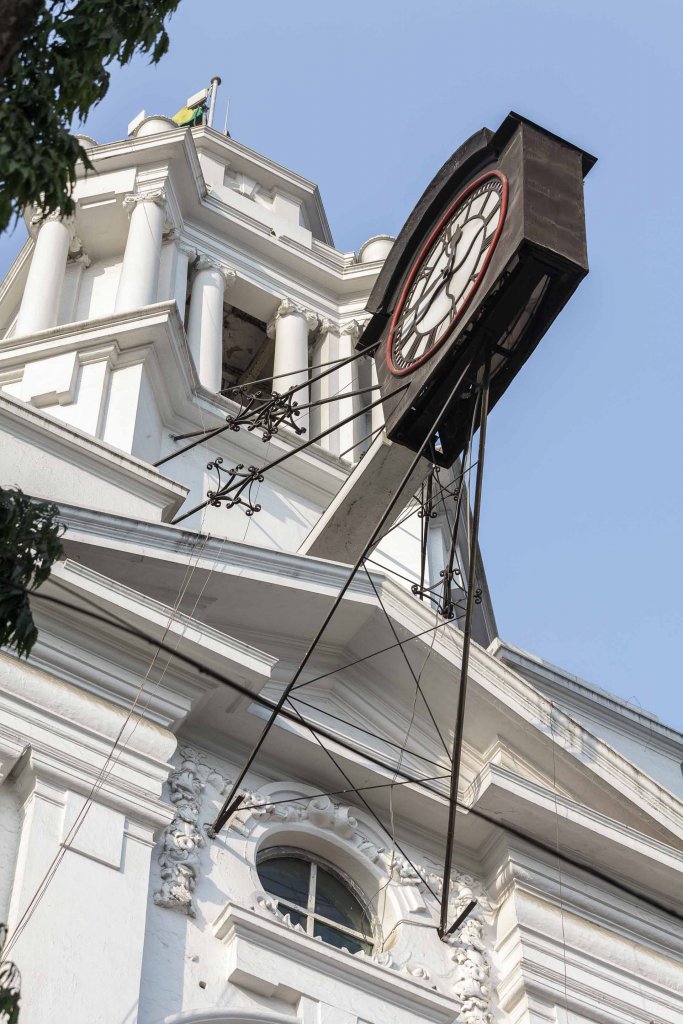
The Custom House was designed by John Begg (1866–1937), Consulting Architect to the Government of India. Along with the Custom House, he designed the Central Telegraph Office and the Printing and Publishing Enterprise. Begg was one of the main architects of “the Raj” and a leading proponent of the Indo-Saracenic style (essentially a mix of Mughal architecture with Gothic revival and British neoclassical styles). In Burma, however, his works were European in form only.
Officials working in Rangoon’s Custom House collected duties and excise taxes from commercial shipping. Although customs in the British Empire were low (even zero for intra-India trade), they were an important source of revenue. Besides collecting customs, officials also tried to prevent smuggling. Some staff were on call 24/7 and assigned apartments on the top floor. Sarah Rooney, in her 30 Heritage Buildings of Yangon, explains the role of the “rummaging staff” who searched for contraband on ships. The ingenuity of smugglers was astounding, although the officials also knew their trade. Drugs, gold, gems and other contraband goods “were hidden behind bulkheads, inside ventilators, lifeboats, lavatory cisterns, bath and washbasin drainage bends, in remote spaces in cargo holds, the list is endless and they all had to be looked into”. As the Custom House continues its work today, there are usually droves of people on the pavement waiting with paperwork in their hands.
